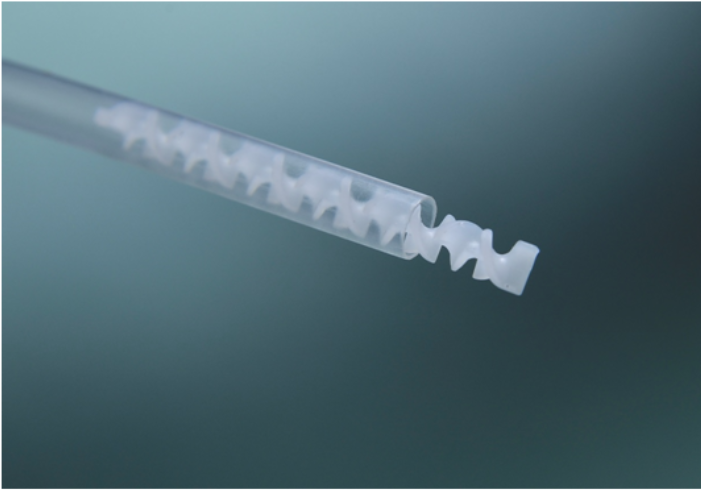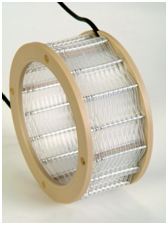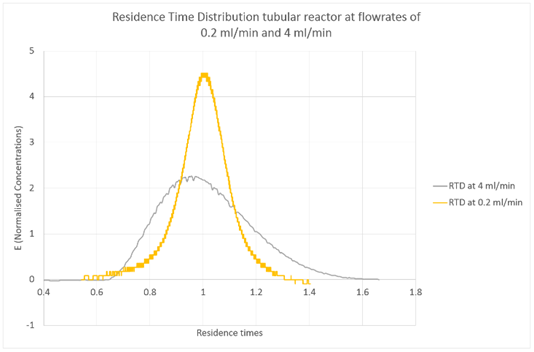Without detailed knowledge of reaction engineering, it is difficult to judge the importance of mixing and dispersion to the outcome of the reaction. If the reaction has a long residence time at high temperatures and both the starting materials and product are stable then we can probably conclude that our reaction will not be sensitive to mixing or dispersion. However, if the reaction is complete in < one minute and/or the reaction is run at a temperature well below ambient we can start to assume that mixing may be a critical factor.
Kevin D. Nagy et al documented their excellent work in this area and anyone involved in scaling flow reactions could do much worse than study the paper referenced below.
Kevin D. Nagy, Bo Shen, Timothy F. Jamison, and Klavs F. Jensen
Departments of Chemical Engineering and ChemistryNovartis−MIT Center for Continuous Manufacturing, Massachusetts Institute of Technology, Cambridge, Massachusetts 02139, United States
Org. Process Res. Dev., 2012, 16 (5), pp 976–981
DOI: 10.1021/op200349f
Publication Date (Web): January 13, 2012
Copyright © 2012 American Chemical Society
For mixing critical reactions Vapourtec recommends the use of micromixer chip reactors. These devices have limitations in scale up but give access to high rates of mixing even when the reagents are at low temperatures (when Brownian motion is slowed).
For less mixing critical reactions Vapourtec systems generally use tubular reactors under laminar flow conditions relying on diffusion for radial mixing. To quantify dispersion effects and the mixing characteristics of these reactors it is necessary to measure the residence time distribution (RTD).
The picture on the left shows a typical Vapourtec reactor. The reactor uses a fluoropolymer tube extruded from high purity Perfluoroalkoxy (PFA).
Most reactors used by Vapourtec have a bore of 1.0 mm as this has been found to offer an acceptable compromise between reactor volume, mixing performance, and resistance to blockages which can result from small quantities of precipitates.
A 10 ml reactor has a total length of 12.73 m.
When scaling up tubular reactors it would be tempting to stay with small diameter (~1.0 mm) tubing a use very long reactors to achieve the high throughputs required. Unfortunately much above 40 ml, the back pressure generated by 1 mm bore reactors becomes highly significant. The obvious alternative is to increase tube diameter, unfortunately, the mixing performance drops rapidly with increasing tube diameter.
For scale-up reactors, Vapourtec favour the static mixer as shown at the top of the page.



